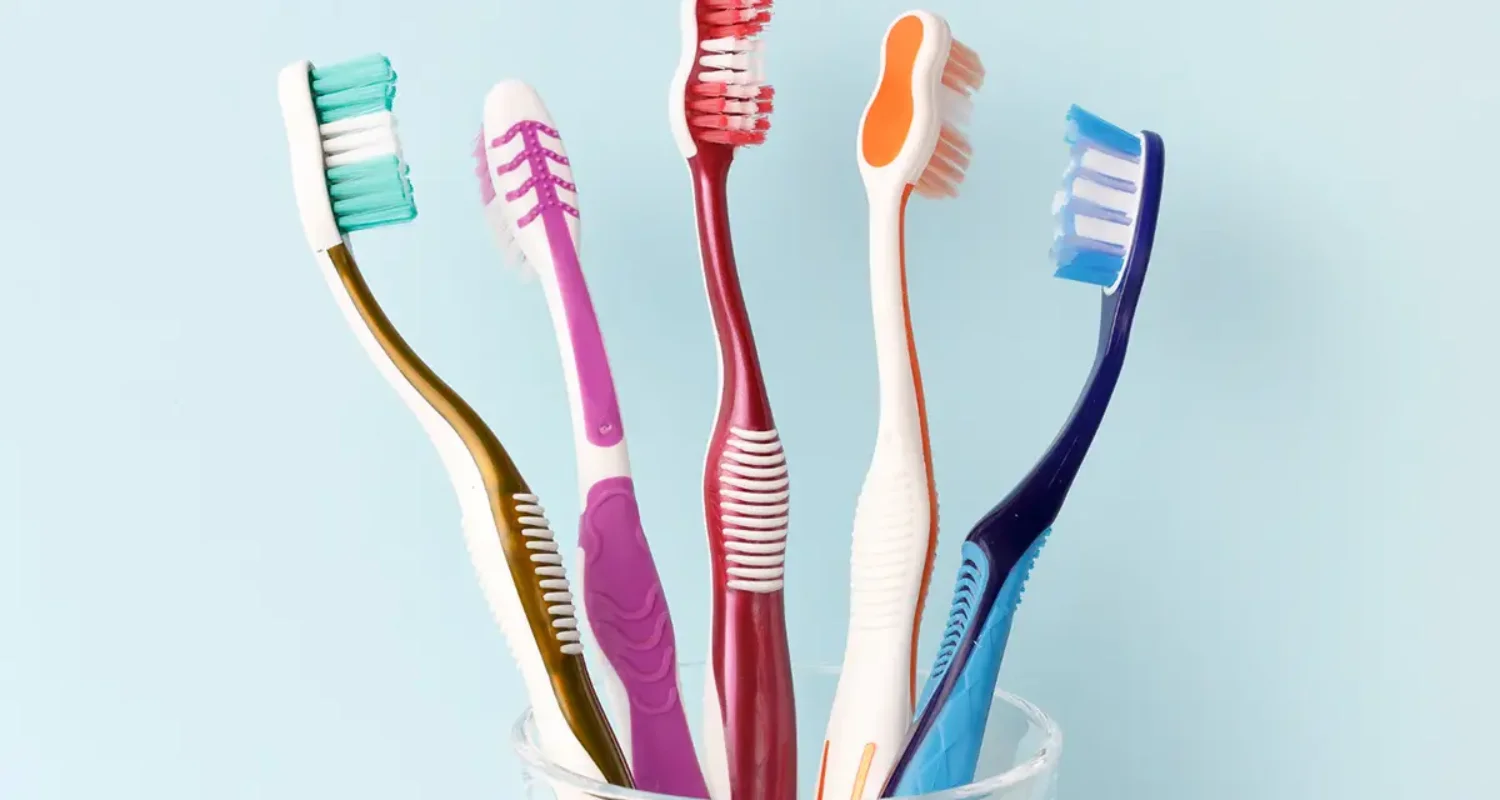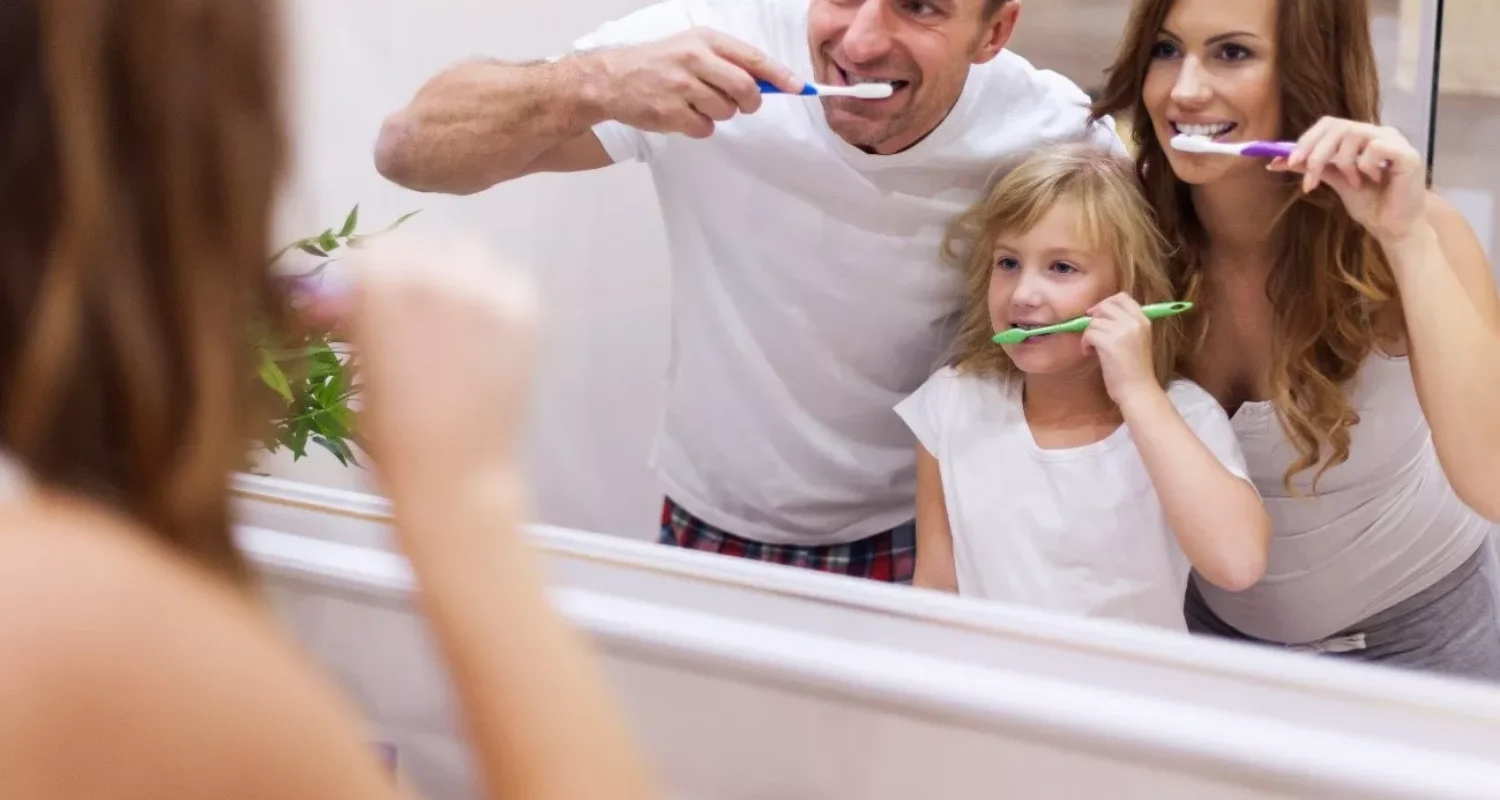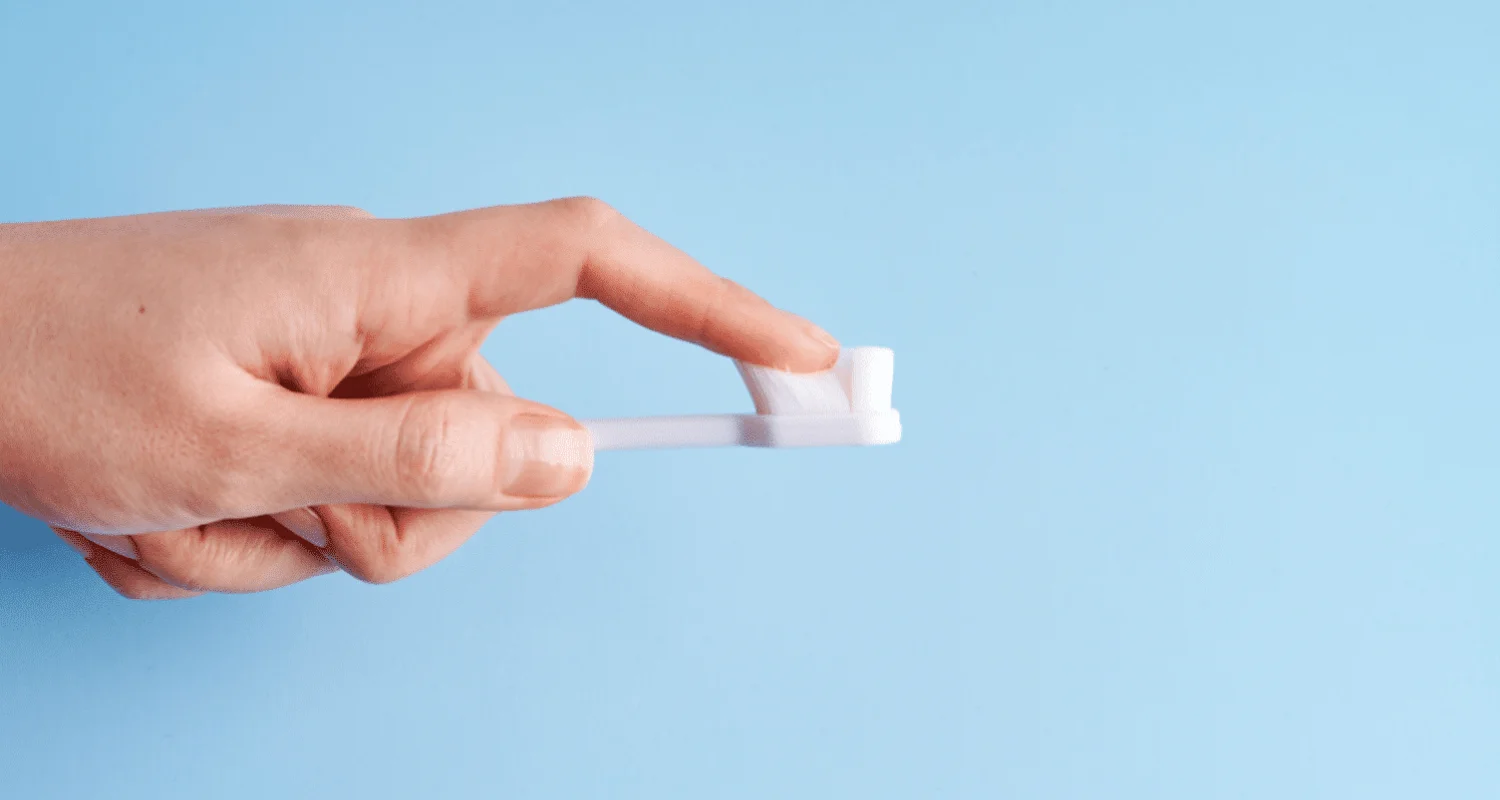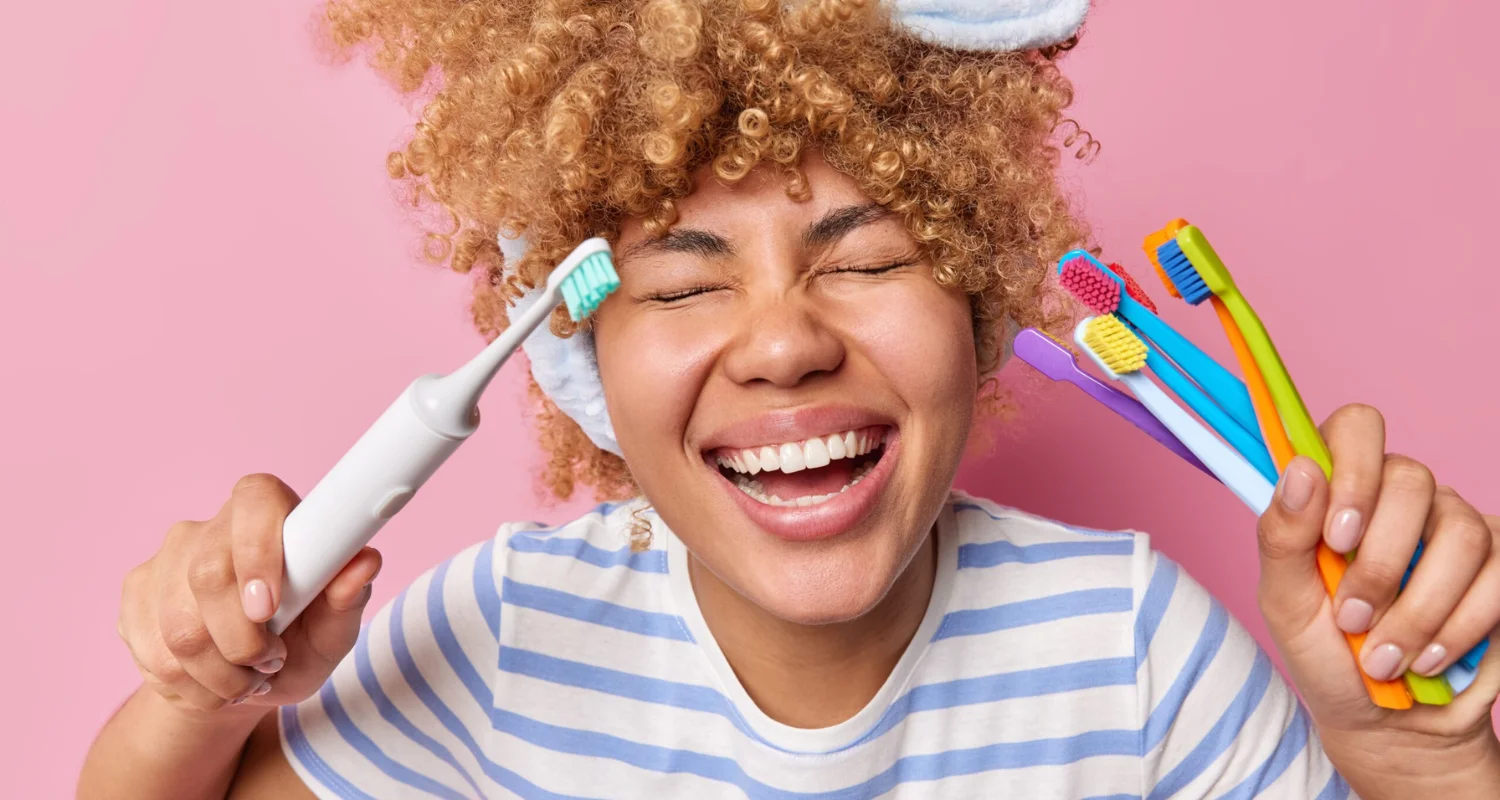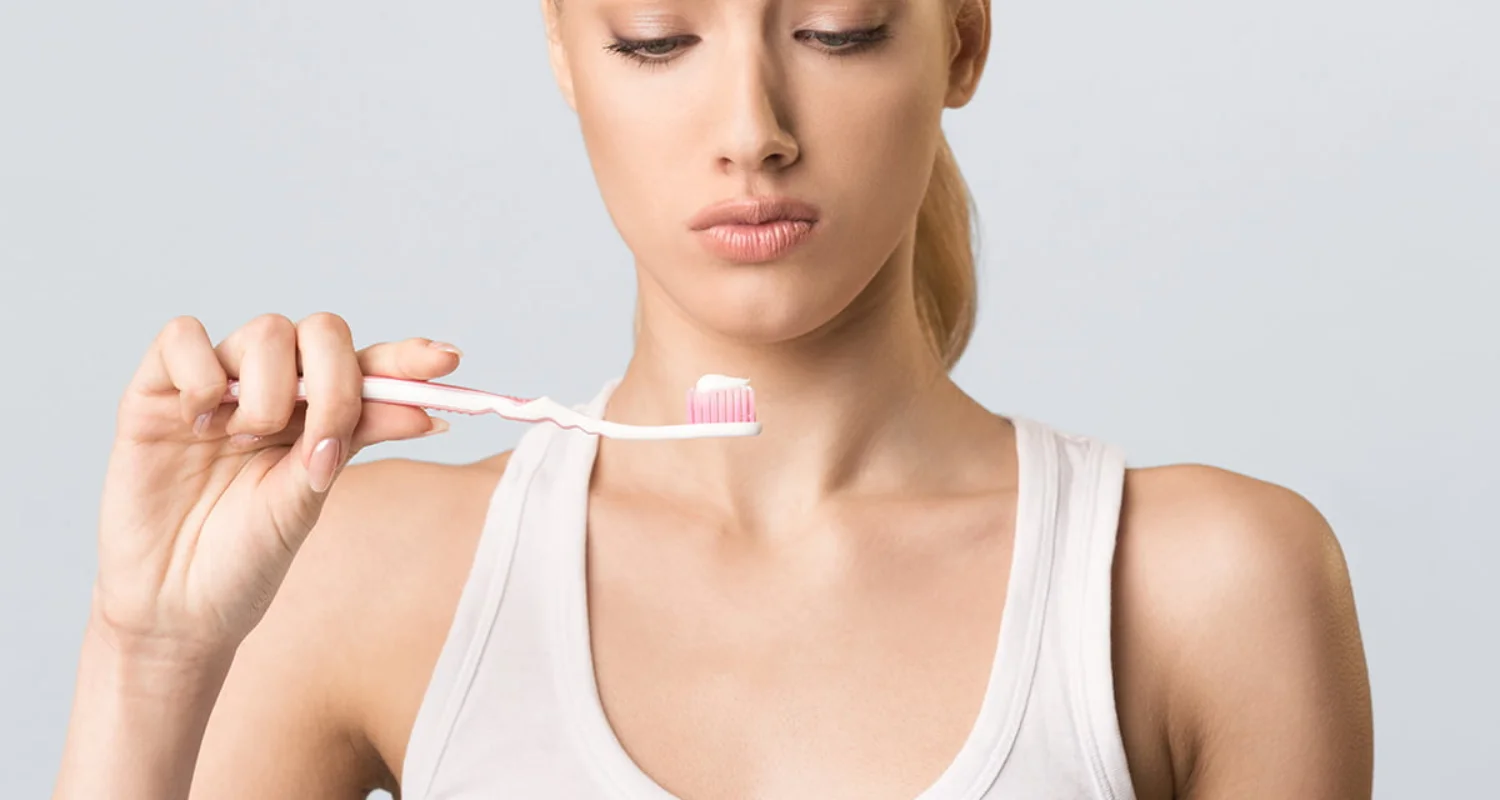Last Updated on: 15th December 2025, 10:06 am
To choose a toothbrush, consider your dental needs—opt for soft bristles for sensitive teeth or bleeding gums, and electric models for better plaque removal. Always look for ADA approval and replace it every 3 months.
Dental plaque is the leading cause of the initiation and development of any dental disease. It forms as a biofilm that clings to the surface of teeth and dentures. This eventually damages the supporting structures. Therefore, effective plaque control is crucial, and that’s why you need to know how to choose a toothbrush.
Despite the fact that it may appear to be just another item on the sink, your toothbrush is one of the most important tools you own. A good toothbrush is essential to maintaining oral health, which contributes significantly to general well-being. Your attempts to maintain proper dental hygiene may be undermined if you choose a subpar brush.
Whether you have sensitive teeth, plaque buildup, or braces, not all toothbrushes are made equal; choosing one based on your unique needs is essential. Many toothbrushes come with hard bristles, soft bristles, electric, manual, and ergonomic features.
However, if you want to pick the best one, you might wonder which features rank as the best. This article is a comprehensive guide on how to choose a toothbrush, helping you explore the various options available and find the one that best suits your needs.
Why Choosing the Right Toothbrush Matters?
A quality toothbrush is essential for daily oral care, helping to maintain healthy teeth and gums over time. It’s important to recognize that not all toothbrushes are the same—individuals have unique needs and preferences for dental hygiene. The chosen toothbrush should cater to those specific needs.
The dentist will recommend the most suitable toothbrush for each person’s situation, though a soft-bristled brush is generally advised for gentle cleaning. The right toothbrush effectively removes plaque, prevents gum disease, and reduces the risk of cavities by thoroughly reaching all areas of the mouth.
Conversely, using the wrong toothbrush can result in ineffective cleaning, gum irritation, or enamel damage, which highlights the importance of knowing how to choose a toothbrush that is best suited for individual dental care needs.
How to Choose a Toothbrush for Different Dental Needs?
As mentioned, each individual faces different oral care issues such as sensitivity, cavities, bleeding gums, or the need for whitening. Understanding how to choose a toothbrush that specifically addresses these concerns is crucial.
Continue reading to learn more about various dental issues and the types of toothbrushes best suited to effectively tackle them!
1. Toothbrush for sensitive teeth
When dealing with sensitive teeth, it’s wise to select a toothbrush that minimizes discomfort while effectively cleaning your teeth. The best toothbrush for sensitive teeth is the one with soft bristles; it is gentle on the enamel and gums and reduces the risk of any irritation or abrasion.
A gentle brushing technique is equally important: avoid applying excessive pressure, which can worsen sensitivity. For added comfort, consider using an electric toothbrush with sensitivity settings, specifically designed to provide a softer, controlled brushing experience. These toothbrushes often come with features like pressure sensors and multiple speed options to ensure a gentle yet thorough clean.
If you want to check some models, click here!
2. Toothbrush for bleeding gums
Bleeding gums often indicate gum inflammation that may require the use of a toothbrush with extra-soft bristles. These bristles are gentle on the gums, helping to clean effectively without causing further irritation or damage.
Using a gentle brushing technique avoids aggravating the condition. An electric toothbrush can be beneficial, as it provides consistent, gentle pressure, which can reduce gum inflammation, promote healing, and help clean your gum line more easily than a manual toothbrush. Watch some of the best models here.
3. Toothbrush for Whitening
For those seeking a brighter smile, choosing a whitening toothbrush may be beneficial. Some toothbrushes are specifically engineered to help polish away surface stains, contributing to a whiter appearance.
Additionally, electric toothbrushes equipped with special whitening modes and built-in blue LED lights provide enhanced cleaning by using varied brush movements and settings to target and lift stains, making teeth appear whiter. With regular use, these features contribute to a cleaner, brighter smile. If you click here, you are going to see some of the best toothbrush for whitening.
4. Toothbrush for tartar control
To effectively manage tartar and plaque buildup, knowing how to choose a toothbrush is important. Toothbrushes designed for tartar control typically feature firm bristles that can reach and clean areas where plaque accumulates.
For optimal plaque removal, consider using electric toothbrushes with oscillating or rotating heads. These types of electric brushes offer enhanced cleaning power, helping to break up and remove plaque more efficiently than manual brushes.
Electric vs. Manual Toothbrush: Which Is Right for You?
Many believe electric toothbrushes are more effective at removing plaque, but both manual and electric toothbrushes can be equally effective if one knows how to use them properly. The choice between them depends on personal comfort and preference.
Electric toothbrushes are ideal for those needing help with thorough brushing, individuals with mobility issues like arthritis, or those prone to brushing too hard. Specialized modes can reduce pressure on sensitive teeth and improve reach in difficult areas.
Features like pressure sensors, two-minute timers, and digital reminders enhance the brushing experience and ensure better oral care. Bluetooth technology in some models even tracks brushing progress.
Electric toothbrushes are also recommended for children, people with braces, and those at high risk of gum disease due to their superior plaque removal capabilities and motivational features.
Of note, their larger handles are beneficial for individuals with conditions that limit hand movement, such as arthritis or carpal tunnel syndrome. On the other hand, manual toothbrushes are lightweight, quiet, and convenient for travelers or those sensitive to sounds and vibrations.
Check some models of electric toothbrush right here.
How to Choose the Right Toothbrush Based on Bristle Type?
In the debate between soft, medium and hard bristle toothbrushes, soft-bristle brushes are considered the safer option. They are more comfortable and less likely to cause damage to teeth. Medium-bristle toothbrushes are the most commonly used while hard-bristle toothbrushes, on the other hand, can harm dentin, the layer beneath the enamel, making them the riskier choice.
The design of the bristles is important for plaque removal. Research indicates that toothbrushes with a zig-zag bristle design are more effective at removing plaque than those with flat bristles. Therefore, it is generally recommended to choose soft bristles with a well-designed bristle pattern for safer and more effective cleaning.
How Often Should You Replace Your Toothbrush?
Choosing the right toothbrush is crucial, but it won’t last forever. A worn-out toothbrush becomes less effective at cleaning teeth and gums, making it important to replace it every three months or when the bristles become frayed.
Additional tips:
- Check for the ADA Seal of Acceptance: Ensure that dental products have been tested for safety and efficacy.
- Brush correctly: Brush for at least two minutes, twice daily, to maintain oral health.
- Replace after illness: Change your toothbrush to avoid reintroducing harmful bacteria.
Selecting the right toothbrush can be more challenging than it seems. This comprehensive guide will help you find the perfect brush to meet your specific needs when shopping for dental hygiene products.
While regular brushing is only one component of good oral hygiene—along with using the right toothpaste, mouthwash, and maintaining a healthy diet—choosing the right toothbrush plays a key role in your daily oral care regimen.
Frequently Asked Questions
How can an individual choose the right manual toothbrush?
When choosing a manual toothbrush, prioritize soft bristles to protect your gums and enamel. A smaller head size is ideal for reaching all areas of your mouth, while a comfortable handle ensures proper brushing technique. Focus on functionality over appearance for the best oral hygiene results.
How do I select the right electric toothbrush?
Select an electric toothbrush based on the type of motion (sonic or oscillating) that suits your needs. Features like a timer, pressure sensor, and long battery life are important for effective and convenient brushing. These features help ensure that you brush for the recommended time without applying too much pressure.
How do I choose the best toothbrush for my teeth?
Choose a toothbrush based on your specific dental needs. For sensitive teeth or gums, opt for ultra-soft bristles with a smaller head. Those with mobility issues might benefit from an electric toothbrush with an ergonomic design. Tailoring your choice to your dental condition ensures better oral care.
Why do I need to choose a good toothbrush?
A good toothbrush is vital for effective plaque removal and overall oral health. Using the right toothbrush prevents dental issues like cavities and gum disease and contributes to your overall well-being by maintaining a healthy mouth.
Voice and Search (Q&A)
What type of toothbrush is best for bleeding gums?
For bleeding gums, choose a toothbrush with extra-soft bristles. These are gentle on inflamed gum tissue and help clean without causing further irritation. An electric toothbrush with pressure sensors can also help prevent brushing too hard.
Should I get a toothbrush with soft or hard bristles?
Always opt for soft bristles unless advised otherwise by a dentist. They’re effective at cleaning teeth without damaging enamel or gums, while hard bristles can cause abrasion and increase sensitivity.
How often should you replace your toothbrush?
You should replace your toothbrush every 3 months or sooner if the bristles are frayed. Also, it’s a good idea to change it after an illness to avoid reintroducing bacteria into your mouth.
Share
References
1. Rahman H. (2023). Comparison of Manual Toothbrushes with Different Bristle Designs in Terms of Cleaning Efficacy and Plaque Control: A Pilot Study. Indian journal of community medicine: official publication of Indian Association of Preventive & Social Medicine, 48(1), 108–111. https://doi.org/10.4103/ijcm.ijcm_404_22
2. Statie, M. D., Lomonaco, I., Nieri, M., Giuntini, V., Franceschi, D., & Franchi, L. (2024). Efficacy of an automatic electric toothbrush with nylon bristles in dental plaque removal: a cross-over randomized controlled trial. Clinical oral investigations, 28(4), 211. https://doi.org/10.1007/s00784-024-05601-w
4. Hillary P. (Oct, 2021). Choosing a Toothbrush: The Pros and Cons of Electric and Disposable. WebMD. https://www.webmd.com/oral-health/choosing-a-toothbrush-the-pros-and-cons-of-electric-and-disposable
-
Nayibe Cubillos M. [Author]
Pharmaceutical Chemestry |Pharmaceutical Process Management | Pharmaceutical Care | Pharmaceutical Services Audit | Pharmaceutical Services Process Consulting | Content Project Manager | SEO Knowledge | Content Writer | Leadership | Scrum Master
View all posts
A healthcare writer with a solid background in pharmaceutical chemistry and a thorough understanding of Colombian regulatory processes and comprehensive sector management, she has significant experience coordinating and leading multidisciplina...


